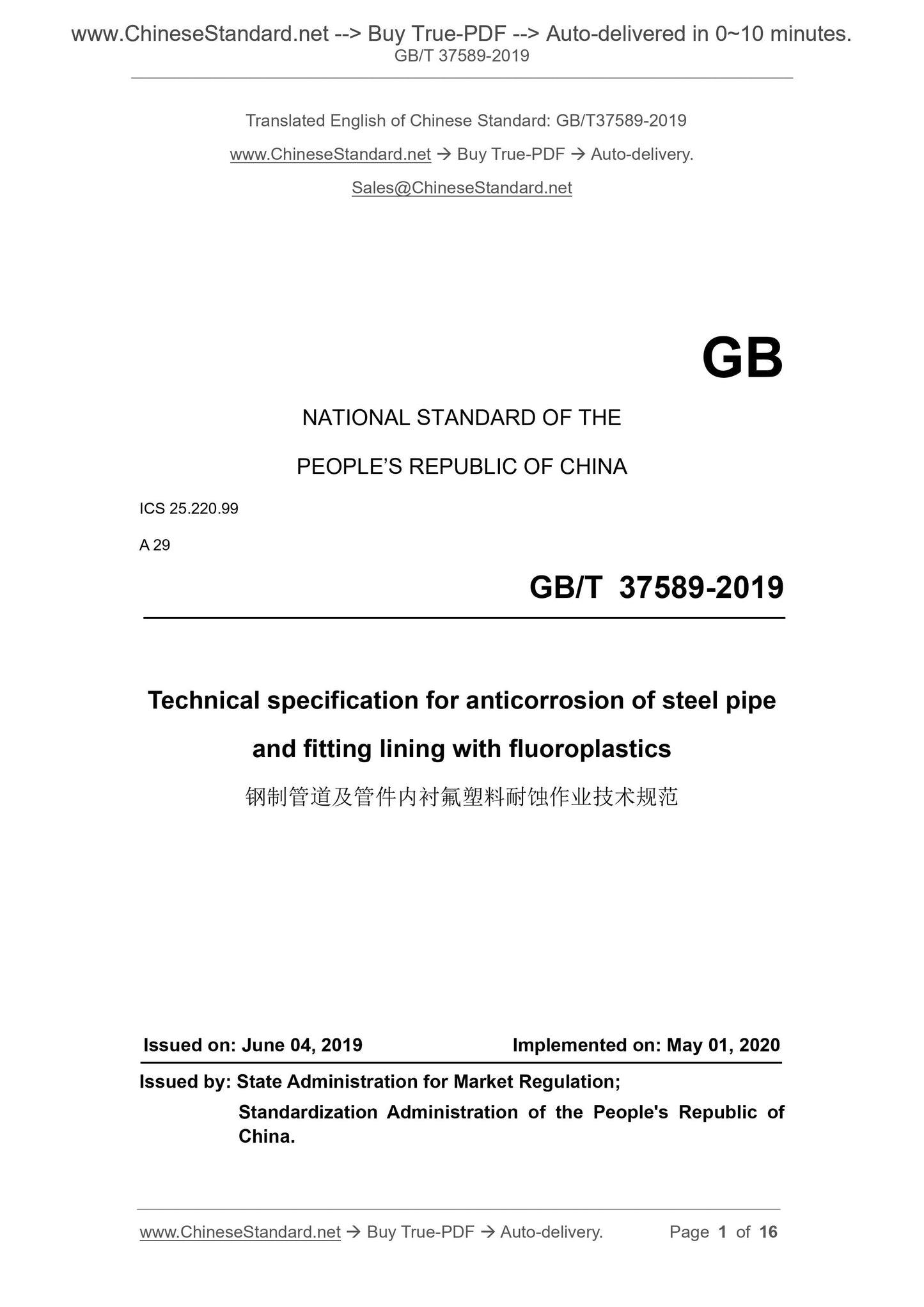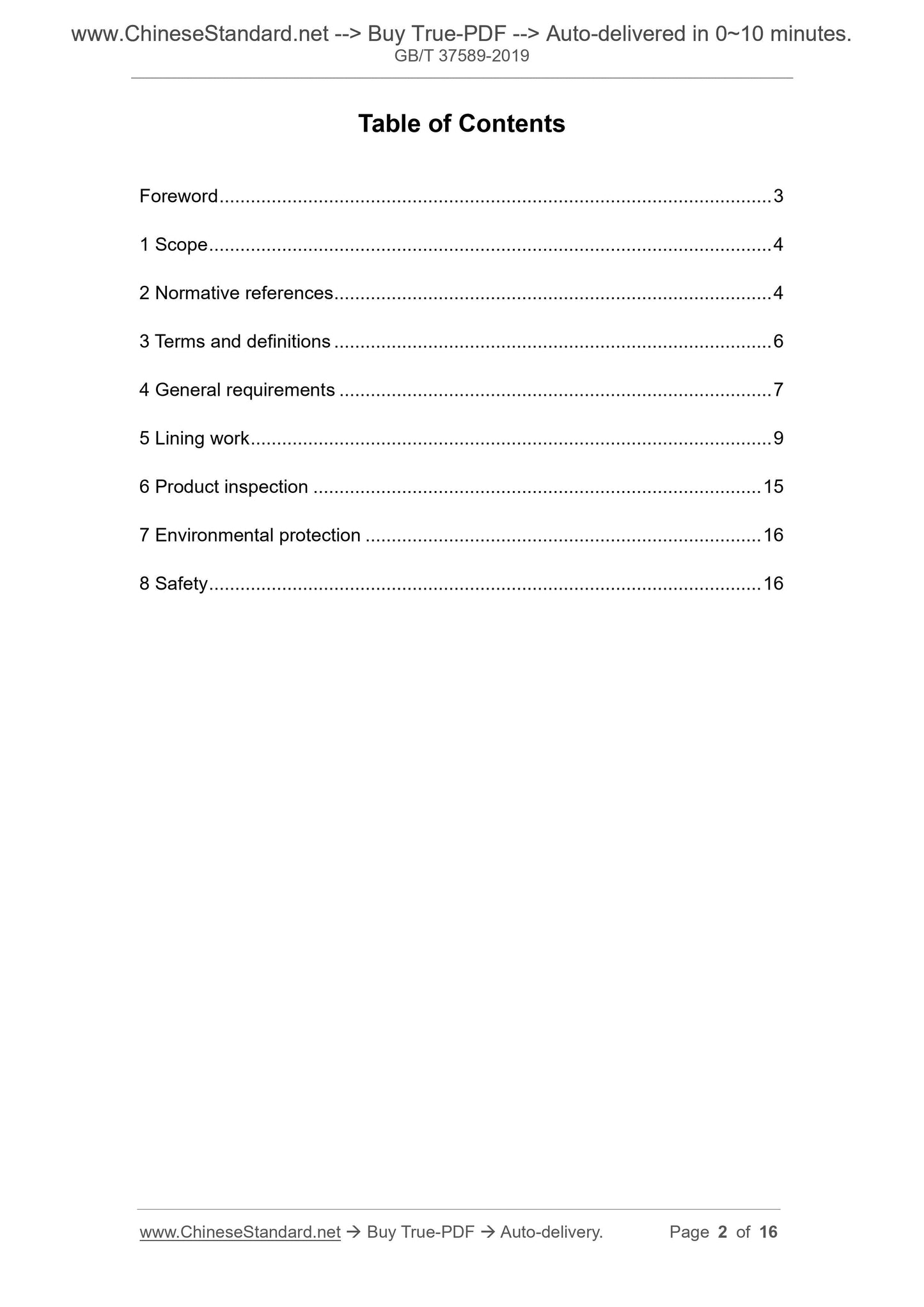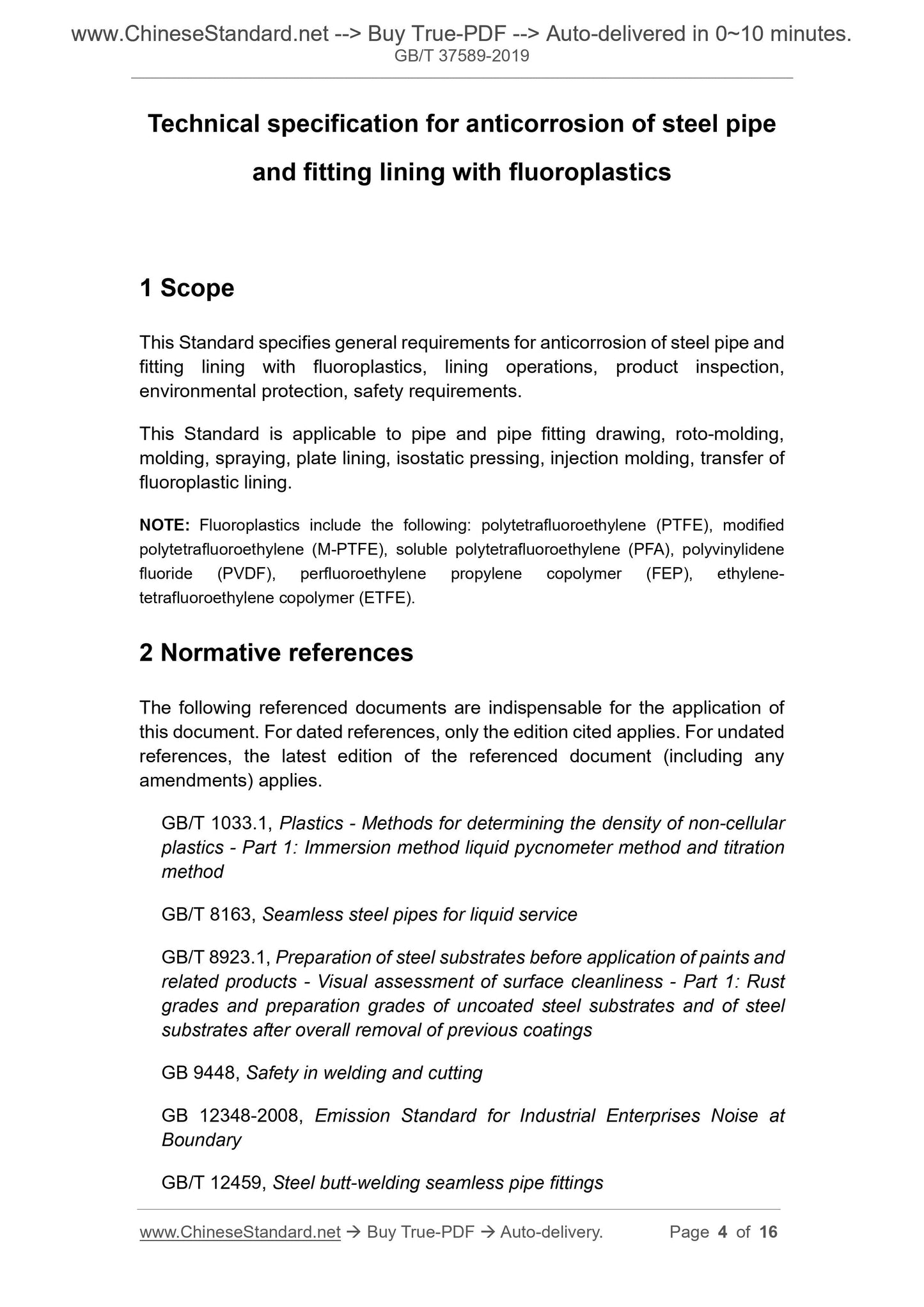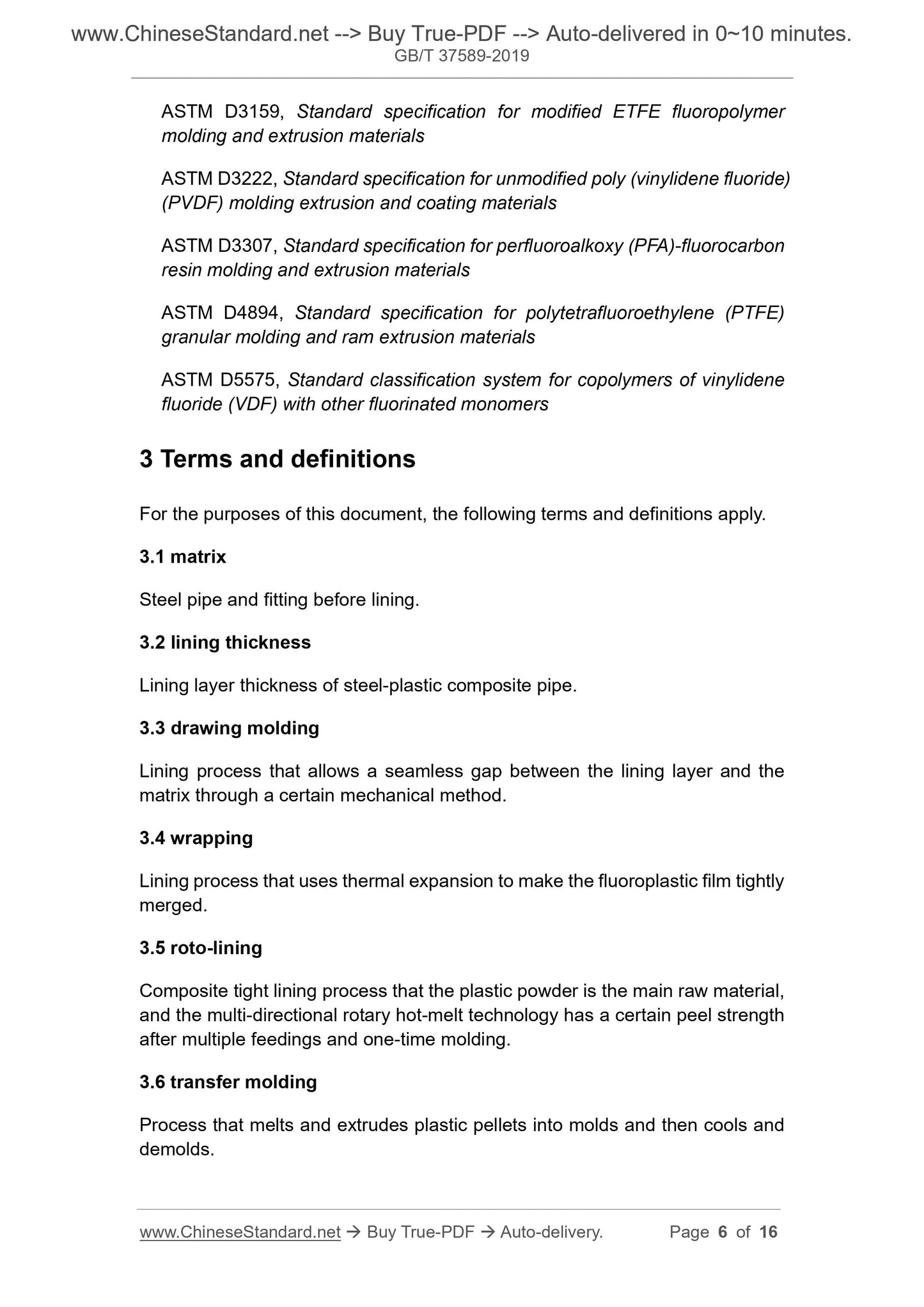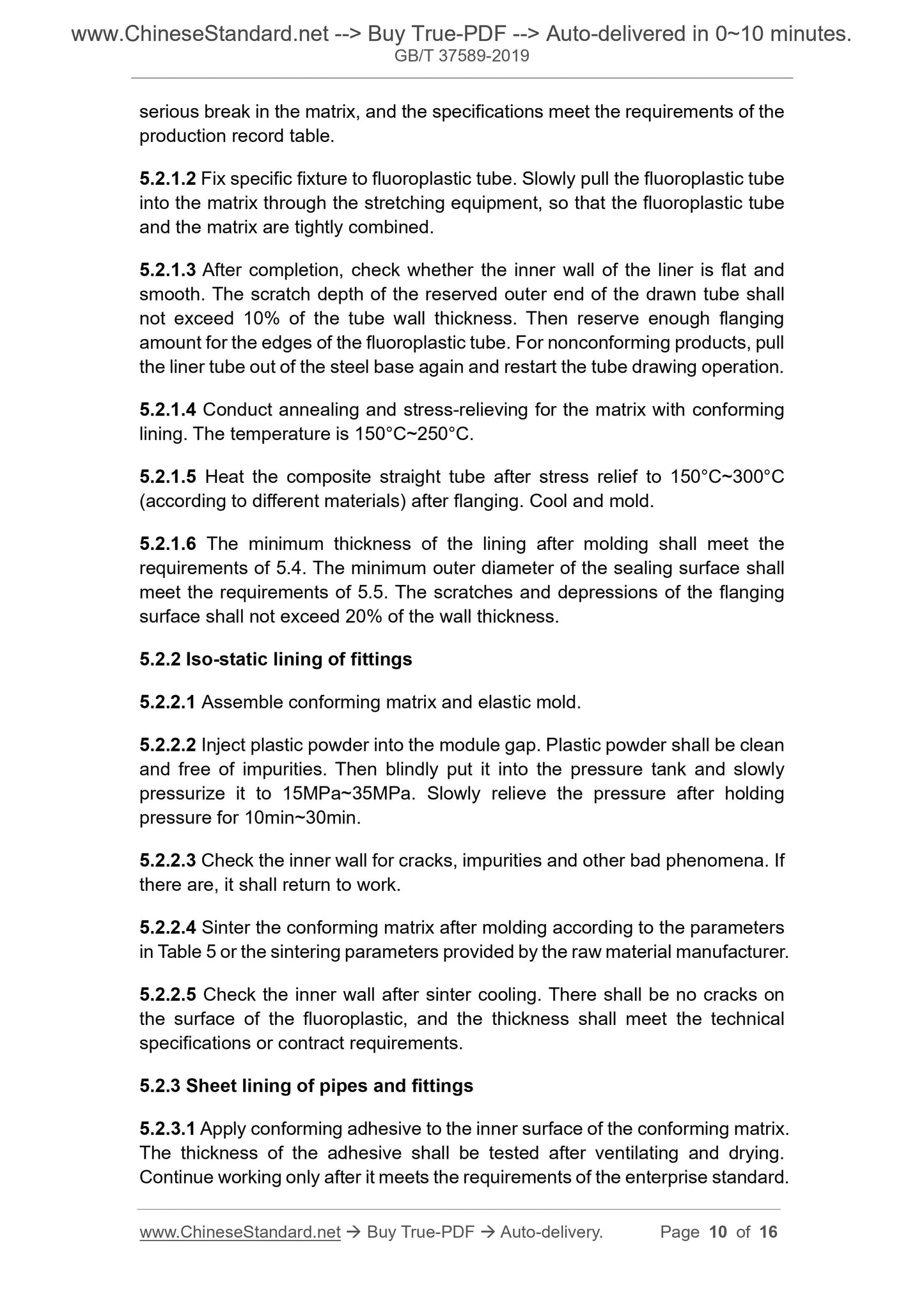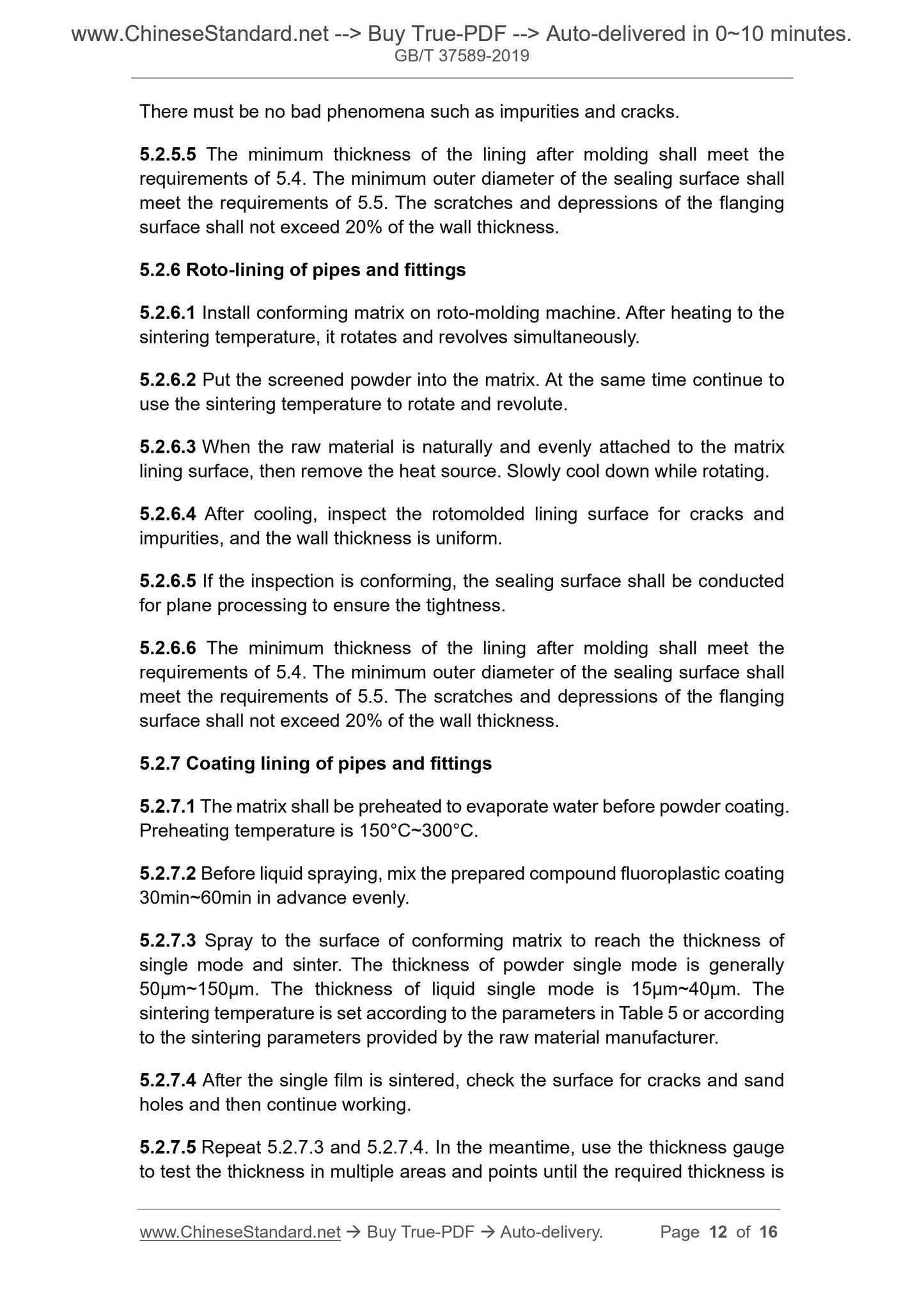1
/
of
6
www.ChineseStandard.us -- Field Test Asia Pte. Ltd.
GB/T 37589-2019 English PDF (GB/T37589-2019)
GB/T 37589-2019 English PDF (GB/T37589-2019)
Regular price
$160.00
Regular price
Sale price
$160.00
Unit price
/
per
Shipping calculated at checkout.
Couldn't load pickup availability
GB/T 37589-2019: Technical specification for anticorrosion of steel pipe and fitting lining with fluoroplastics
Delivery: 9 seconds. Download (and Email) true-PDF + Invoice.Get Quotation: Click GB/T 37589-2019 (Self-service in 1-minute)
Newer / historical versions: GB/T 37589-2019
Preview True-PDF
Scope
This Standard specifies general requirements for anticorrosion of steel pipe andfitting lining with fluoroplastics, lining operations, product inspection,
environmental protection, safety requirements.
This Standard is applicable to pipe and pipe fitting drawing, roto-molding,
molding, spraying, plate lining, isostatic pressing, injection molding, transfer of
fluoroplastic lining.
NOTE: Fluoroplastics include the following: polytetrafluoroethylene (PTFE), modified
polytetrafluoroethylene (M-PTFE), soluble polytetrafluoroethylene (PFA), polyvinylidene
fluoride (PVDF), perfluoroethylene propylene copolymer (FEP), ethylene-
tetrafluoroethylene copolymer (ETFE).
Basic Data
| Standard ID | GB/T 37589-2019 (GB/T37589-2019) |
| Description (Translated English) | Technical specification for anticorrosion of steel pipe and fitting lining with fluoroplastics |
| Sector / Industry | National Standard (Recommended) |
| Classification of Chinese Standard | A29 |
| Classification of International Standard | 25.220.99 |
| Word Count Estimation | 11,122 |
| Date of Issue | 2019-06-04 |
| Date of Implementation | 2020-05-01 |
| Issuing agency(ies) | State Administration for Market Regulation, China National Standardization Administration |
Share
